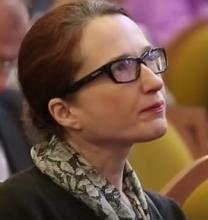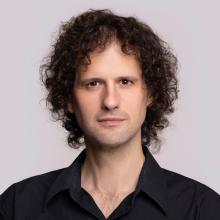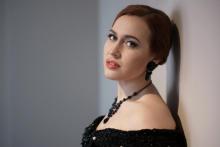The Maid of Orleans

Content
- Performance information
- In a nutshell
- The story
- Timeline
- Interview with director Dmitri Tcherniakov
- Interview with conductor Valentin Uryupin
- Background: The Maid of Orleans – a history of interpretations
- Background: Joan of Arc and Tchaikovsky
- Biographies of the artistic team
- Biographies of the singers
Performance information
Voorstellingsinformatie
Performance information
The Maid of Orléans
Pyotr Ilyich Tchaikovsky (1840 – 1893)
Duration
2 hours and 50 minutes, including one intermission
This performance is sung in Russian. The performance features surtitles in Dutch (based on the translation by Els de Roon Hertoge) and in English (translated by Jonathan Reeder).
Opera in four acts and six scenes
Libretto
Compiled by the composer himself, partly based on the play of the same name by Friedrich Schiller (1801)
World premiere
25 February 1881, Mariinsky Theatre, Saint Petersburg
Musical direction
Valentin Uryupin
Stage direction and set design
Dmitri Tcherniakov
Costume design
Elena Zaitseva
Lighting design
Gleb Filshtinsky
Fight choreography
Ran Arthur Braun
Dramaturgy
Tatiana Verestchagina
Joan of Arc
Elena Stikhina
King Charles VII
Allan Clayton
Agnès Sorel
Nadezhda Pavlova
Dunois
Vladislav Sulimsky
Lionel
Andrey Zhilikhovsky
The Archbishop
John Relyea
Raimond
Oleksiy Palchykov
Thibaut d’Arc
Gábor Bretz
Bertrand / Lauret / Warrior
Patrick Guetti
The Angel’s voice
Eva Rae Martinez*
Mintsrel
Tigran Matinyan
*Dutch National Opera Studio
Netherlands Philharmonic
Chorus of Dutch National Opera
Chorus master Edward Ananian-Cooper
Co-production with Metropolitan Opera New York
Production team
Assistant conductor
Boudewijn Jansen
Junior assistant conductor
Kyungmin Park
Assistant directors
Thorsten Cölle
Annemiek van Elst
Evening director
Annemiek van Elst
Assistant set designer
Danila Travin
Assistant costume designer
Katrin Unger
Directing interns
Gijs Groeneveld
Maxim Ershov
Répétiteurs
Irina Sisoyeva
Frédéric Calendreau
Language coach
Alexandra Goloubitskaia
Assistant chorus conductor
Irina Sisoyeva
Chorus language coach
Irina Sisoyeva
Junior assistant director (chorus)
Iris Skolidi
Stage managers
Roland Lammers van Toorenburg
Marjolein Bergsma
Julia van Berkel
Zoë Pauel
Artistic planner
Sonja Heyl
Costume supervisor
Jojanneke Gremmen
Senior stage manager
Jeroen Jaspers
Senior lighting technician
Coen van der Hoeven
Senior props master
Niko Groot
Special effects
Koen Flierman
Assistant props manager
Remko Holleboom
Senior dresser
Jenny Henger
Senior makeup artists
Trea van Drunen
Pim van der Wielen
Sound engineer
Niels Mudde
Dramaturg
Niels Nuijten
Title director
Eveline Karssen
Supertitles operator
Maxim Paulissen
Senior music librarian
Rudolf Weges
Production coordinator
Mark van Trigt
Production manager
Emiel Rietvelt
Production intern
Nikki Boerhof
Extras
Dick Addens
Jan Bakhuis
Annemarie Brandhorst
Victor Bouaziz-Viallet
Earl Daniël
John Fernon
Gijs Groeneveld
Maarten van Grootel
Sabine van der Helm
Yannick Jhones
Renzo Popolizio
Evgenia Rubanova
Floor Scholten
Anton Sherkin
Tijmen Teunissen
Alicia Verdú Macián
Netherlands Philharmonic
1st Violin
Ionel Manciu
Koen Stapert
Valentina Bernardone
Mascha van Sloten
Anuschka Franken
Henrik Svahnström
Derk Lottman
Marina Malkin
Paul Reijn
Camille Poirier-Lachance
Novile Maceinaite
Ilja Venema
Tamara Korkadze
Tessa Badenhoop
Eva Traa
2nd Violin
David Peralta Alegre
Marlene Dijkstra
Mintje van Lier
Joanna Trzcionkowska
Marieke Boot
Inês Costa Pais
Karina Korevaar
Jeanine van Amsterdam
Eva de Vries
Anita Jongerman
Wiesje Nuiver
Elisa Dijkstra
Phoebe Tarleton
Viola
Hannah Strijbos
Martina Forni
Teresa Caleiro
Wouter Huizinga
Mateo García Martín
Marjolein de Waart
Avi Malkin
Christina Schoonakker
Iker Isasi Saez
Anna Smith
Cello
Nuala McKenna
Douw Fonda
Liesbeth Bosboom
Anjali Tanna
Carin Nelson
Nitzan Laster
Atie Aarts
Manon Leroux
Double Bass
Gabriel Abad Varela
Mario Torres Valdivieso
Sorin Orcinschi
Julien Beijer
Larissa Klipp
Dobril Popdimitrov
Flute
Leon Berendse
Andreia Serra da Costa
Elke Elsen
Anna May van der Feen
Oboe
Toon Durville
Dario Carmona Beltran
Maxime le Minter
Clarinet
Rick Huls
Davide Simionato
Bassoon
Remko Edelaar
Jaap de Vries
Horn
Tiago Branco Campos
Stef Jongbloed
Miek Laforce
Fred Molenaar
Trumpet
Gertjan Loot
Jeroen Botma
Marc Speetjens
Joost Hettinga
Trombone
Bram Peeters
Niels Jacobs
Mario Machado
Tuba
David Kutz
Timpani
Theun van Nieuwburg
Percussion
Matthijs van Driel
Diego Jaen Garcia
Nando Russo
Harp
Sandrine Chatron
Kerstin Scholten
Organ
Francisco Fernandes
Stage
Trumpet
Tiago Baeza
David Pérez Sanchez
Andre Ponte
Sergi Serra Buscallà
Trombone
Tomas Ferreira
Mathis Lenormand
Cyril Beijer
Jelle Koertshuis
Orchestra production manager
Frouke Terpstra
Chorus of Dutch National Opera
Sopranos
Aliya Akhmedeeva
Esther Adelaar
Diana Axentii
Lisette Bolle
Else-Linde Buitenhuis
Jeanneke van Buul
Caroline Cartens
Antonia Dunjko
Nicole Fiselier
Maaike Hupperetz
Simone van Lieshout
Tomoko Makuuchi
Vesna Miletic
Sara Pegoraro
Lise Petrovich
Elizabeth Poz
Jannelieke Schmidt
Sandra Siniväli
Kiyoko Tachikawa
Imara Thomas
Varvara Tishina
Claudia Wijers
Ruth Willemse
Altos/Mezzos
Rosalie Ardts
Irmgard von Asmuth
Maaike Bakker
Elsa Barthas
Daniëlla Buijck
Rut Codina Palacio
Johanna Dur
Valerie Friesen
Yvonne Kok
Maria Kowan
Myra Kroese
Liesbeth van der Loop
Liza Lozica
Delphine Martens
Itzel Medecigo
Maria de Moel
Maaike Molenaar
Emma Nelson
Sophia Patsi
Marieke Reuten
Barbara Tetenberg
Klarijn Verkaart
Tenors
Gabriele Bonfanti
Wim-Jan v. Deuveren
Frank Engel
Ruud Fiselier
Cato Fordham
Livio Gabrielli
Dimo Georgiev
John v. Halteren
Robert Kops
Raimonds Linajs
Roy Mahendratha
Tigran Matinyan
Martin van Os
Richard Prada
Mitch Raemaekers
Mirco Schmidt
François Soons
Jeroen de Vaal
Bert Visser
Rudi de Vries
Basses/Baritones
Ronald Aijtink
Peter Arink
Alfonso Michele Ciulla
Jeroen van Glabbeek
Julian Hartman
Agris Hartmanis
Hans Pieter Herman
Sander Heutinck
Richard Meijer
Matthijs Mesdag
Maksym Nazarenko
Tobias Odenwald
Christiaan Peters
Hans Pootjes
Matthijs Schelvis
Jaap Sletterink
Vincent Spoeltman
René Steur
Berend Stumphius
Rob Wanders
Marijn Zwitserlood

In a nutshell
About the director, the composer, the many DNO debuts, and Joan of Arc.
In a nutshell
Dmitri Tcherniakov
The celebrated director Dmitri Tcherniakov is returning to Dutch National Opera with Tchaikovsky’s rarely performed opera The Maid of Orleans. Tcherniakov has built an international reputation for innovative and psychologically acute interpretations of the Russian operatic repertoire. His stagings are renowned for their strong focus on the characters, which lets him reveal their innermost urges and highlight their vulnerability. In The Maid of Orleans, he places Joan of Arc in a courtroom and shows her in a valiant battle between her own convictions and society’s expectations.
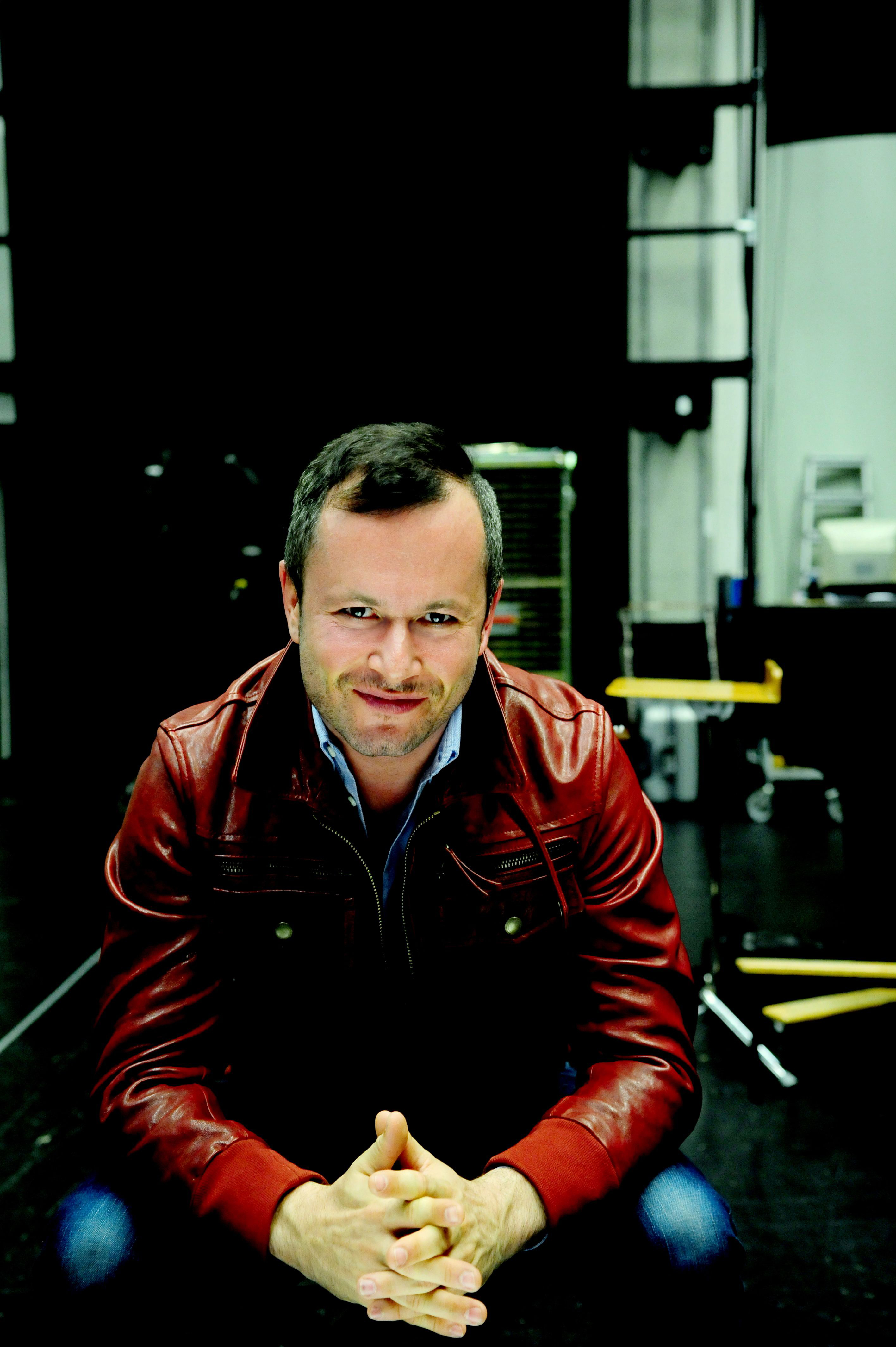
Joan of Arc
Joan of Arc (1412–1431) is one of the most intriguing figures in history and the subject of much debate. She was a young woman who led French troops to victory over the English at Orleans during the Hundred Years’ War. She was later captured by the enemy, tried and sentenced to be burned at the stake. After her death, she became revered as a heroine of the French people, a symbol of their faith and courage. Throughout the centuries, Joan of Arc has remained a source of inspiration for the imagination and new interpretations, whether in art, popular culture or social and political movements.

Tchaikovsky's grand opéra
Pyotr Ilyich Tchaikovsky (1840-1893) is one of the best-loved and most influential composers in the history of Russian music. The composer wrote The Maid of Orleans (1878–1879) during a particularly turbulent time in his life. He was struggling in his private life with inner turmoil and a disastrous attempt at marriage, yet artistically this was his most productive period. About one year earlier, he had composed his opera Eugene Onegin and his world-famous ballet Swan Lake; then he wrote The Maid of Orleans, a work in which he sought to create a grand historical drama in the French tradition of grand opéra.

Musical powerhouses
In charge of the music for this new production of The Maid of Orleans in Amsterdam is Valentin Uryupin, making his debut here at Dutch National Opera. He will be conducting the Netherlands Philharmonic Orchestra and the Chorus of Dutch National Opera as they take on Tchaikovsky’s ambitious score. The title role will be sung by the soprano Elena Stikhina, who previously performed Madama Butterfly, Suor Angelica and Tosca to great acclaim at DNO. She will be surrounded by a world-class cast of soloists, including tenor Allan Clayton (King Charles VII), baritones Andrey Zhilikhovsky (Lionel) and Vladislav Sulimsky (Dunois), and bass John Relyea (The Archbishop), all of whom are making their DNO debuts.


The story
Thibaut – Joan’s father – warns everyone about the dangers that await them. War is imminent and, in such uncertain times, Joan must obey her father’s will ...
The story
Act I
Thibaut – Joan’s father – warns everyone about the dangers that await them. War is imminent and, in such uncertain times, Joan must obey her father’s will: she is expected to marry Raymond, to whom she was betrothed as a child. Joan refuses, much to her father’s fury, and he accuses her of being under the influence of sinister forces. Joan confesses that she has a calling that requires a vow of chastity. She feels that it is her duty to stop the bloodshed and put an end to the human suffering. When left alone on stage, Joan convinces herself that now is the time to act. She is overcome by doubts and fears until she hears voices that give her courage and confidence.
Act II
The war is raging on. In the royal castle, the knight Dunois is attempting to coax King Charles into regaining his pride and sense of responsibility, as the king has been neglecting all his duties. The empty treasury, military defeats and desertions – none of Dunois’ exhortations make any impression, though; the king seeks distraction in the arms of his lover Agnès Sorel. When Dunois hears that the dispirited monarch is planning to flee, he threatens to resign his post. At that critical moment, salvation comes in the form of a miraculous young maiden, a bringer of victory. The archbishop is prepared to confirm the miracle officially. Joan appears before the assembled crowd. She is convinced that if she can help the king, she will be helping everyone. By order of King Charles, Joan is granted extraordinary powers.
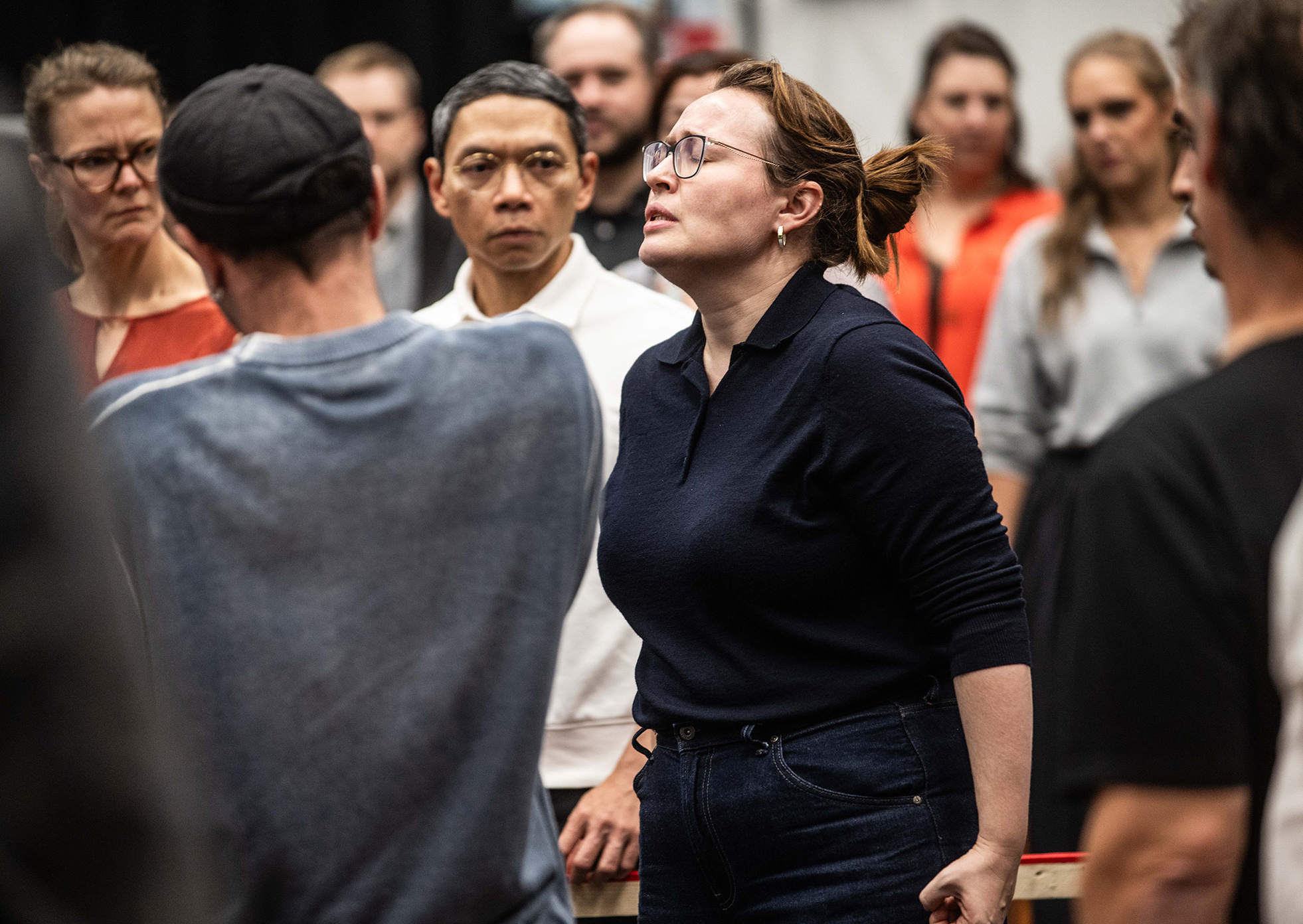
Act III
Jeanne meets the enemy knight Lionel. They start fighting, but suddenly Joan hesitates: she cannot take her eyes off Lionel’s face. She finds herself incapable of delivering the final blow and urges him to flee. Confused and moved, Lionel asks her to follow him. Joan loses her self-confidence and is overcome by her emotions. She feels that she has broken her sacred vow.
Charles celebrates his coronation and honours Joan publicly as his heroine. Suddenly, her father Thibaut steps out of the shadows. He accuses his daughter of consorting with the forces of Hell and demands that she proves her innocence publicly. Dunois draws his sword to defend her, yet Joan remains silent, convinced that she cannot counter these accusations. Everyone turns their back on her. The archbishop too poses the same question: is she guilty? No answer. Everybody deserts her. Lionel offers her his protection, but Joan rejects him.
Act IV
Jeanne is alone, consumed by despair and longing. Doubting her calling and rejected by all, she waits and calls out desperately for Lionel. When he appears, she hears the voices: she has broken her vows and allowed earthly love into her heart.
Joan is sentenced to death. In the presence of a large crowd, she is prepared for her execution. Then she hears the voices again; this time, they are bringing forgiveness.

Timeline
From the start of the Hundred Years' War in 1337 to the canonisation of Joan of Arc in 1920.
Timeline
1337
After the English king Edward III lays claim to the French throne, war breaks out and the Hundred Years’ War between the two great powers begins.
1412
Joan of Arc is born in January in the village of Domrémy, where as a young girl she hears angelic voices urging her to fulfil her sacred mission: to live a devout (and virginal) life and to save France.
1429
In Chinon, Joan meets the dauphin, the crown prince of France, to whom she foretells, among other things, the liberation of Orléans and his coronation as King Charles VII. Both prophecies come true in the same year, earning Joan the nickname “the Maid of Orléans.”
1430
After an unsuccessful attempt to retake Paris, Joan is captured by the Burgundians, who sell her to the hostile English.
1431
In January, Joan’s trial begins, during which she is accused of heresy, witchcraft, and cross-dressing — at times she had dressed as a man during her mission. She is sentenced to death. On 30 May 1431, Joan dies at the age of 19, burned at the stake.
1452
At the end of the Hundred Years’ War, a campaign begins to review Joan’s trial and clear her name. In 1456, her conviction is annulled, and Joan goes on to become a great posthumous heroine of France.
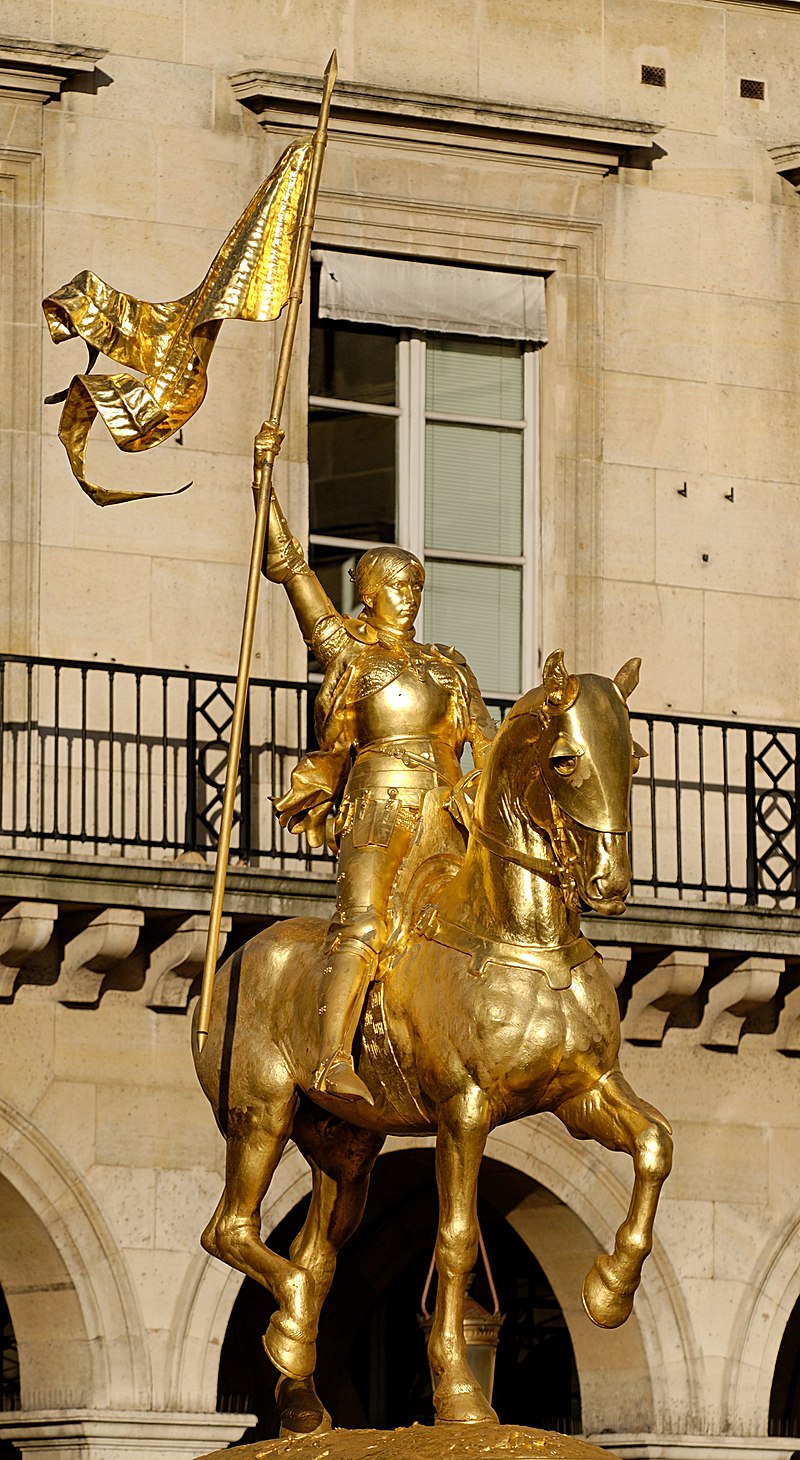

1801
On 11 September, the play Die Jungfrau von Orléans by German playwright Friedrich Schiller premieres in Leipzig. The play becomes highly popular and inspires many other writers and artists.
1840
On 7 May, Pyotr Ilyich Tchaikovsky is born in Votkinsk, a small town on the edge of the Ural Mountains, about a thousand kilometres east of Moscow.
1878
After reading Schiller’s play, in a popular Russian translation from 1821 by Vasily Zhukovsky, Tchaikovsky begins composing The Maid of Orleans.
1881
The Maid of Orleans premieres on 13 February at the Mariinsky Theatre in St. Petersburg to great success. Two weeks later, Russian Tsar Alexander II is assassinated and further performances of the opera are cancelled as part of national mourning.
1893
On 6 November, Tchaikovsky dies at the age of 53 in St. Petersburg. To this day, his music remains beloved, and many of his works continue to be performed, including the famous ballets Swan Lake and The Nutcracker, and the operas Eugene Onegin and The Queen of Spades.
1920
Joan of Arc is canonised by Pope Benedict XV. To this day, she remains one of the most famous figures of the Middle Ages and continues to inspire countless writers, musicians, filmmakers, and others.

“Joan is burning from within”
After his earlier productions of The Legend of the Invisible City of Kitezh (2013) and Prince Igor (2017), director Dmitri Tcherniakov returns to Amsterdam — this time with a rarely performed opera by Tchaikovsky, The Maid of Orleans.
An interview with the director Dmitri Tcherniakov
“Joan is burning from within”
After his earlier productions of The Legend of the Invisible City of Kitezh (2013) and Prince Igor (2017), director Dmitri Tcherniakov returns to Amsterdam — this time with a rarely performed opera by Tchaikovsky, The Maid of Orleans.
Text: Andrei Zorin
The Maid of Orleans is performed less frequently than other operas by Tchaikovsky and is even deemed by some to be a failure. What made you decide to stage it despite this?
“I wouldn’t say this is his most successful opera, but it is definitely not a failure. I have known this work since I was a child — I first saw it in the 1980s in the Opera of Odessa. I can’t remember the details of that performance, but something in it really moved me. It contained a secret, something I couldn’t explain. I still had the same feeling later when I heard it again as an adult. I could never believe in it unequivocally: it sounded too bombastic or a bit fake at times, at others too solemn or influenced too much by other composers and styles. Even so, I remained captivated by that sense of a hidden mystery. I’ve always thought I’d like to tackle this opera some day, if only to find out what that secret is.”
“There’s a persistent rumour that Tchaikovsky himself was dissatisfied with the result and was planning to revise the work. Some people even claim there is a second, ‘improved’ version, at least in sketch form, hidden somewhere in an inheritance. I did once investigate this, but it turned out to be a complete fiction. And now here I am, standing face to face with this strange opera — a work in which moments of heart-rending beauty alternate with passages that sound like a sudden outburst of Meyerbeer, or whoever Tchaikovsky was trying to learn from at that point. What motivates me is the puzzle: what is it that fascinates me, despite everything?”
The Maid of Orleans is essentially an opera with one lead, despite the many characters. The drama revolves around Joan, a figure European artists have repeatedly returned to for five centuries now. How does this production fit in with that tradition and what is your personal connection with her?
“It’s true that Joan has all the loveliest music in the opera. You feel she is the focal point of Tchaikovsky’s inspiration. If she is not on the stage for a while, you almost start to miss her — you are waiting for her to return.”
“The picture we have of Joan of Arc is based mainly on her trial: the accusations, the witness statements and the interrogations. She was put under the magnifying glass, as it were; people wanted to study and dissect her. We know they even sent someone to make friends with her purely to get her to talk and to betray herself.”
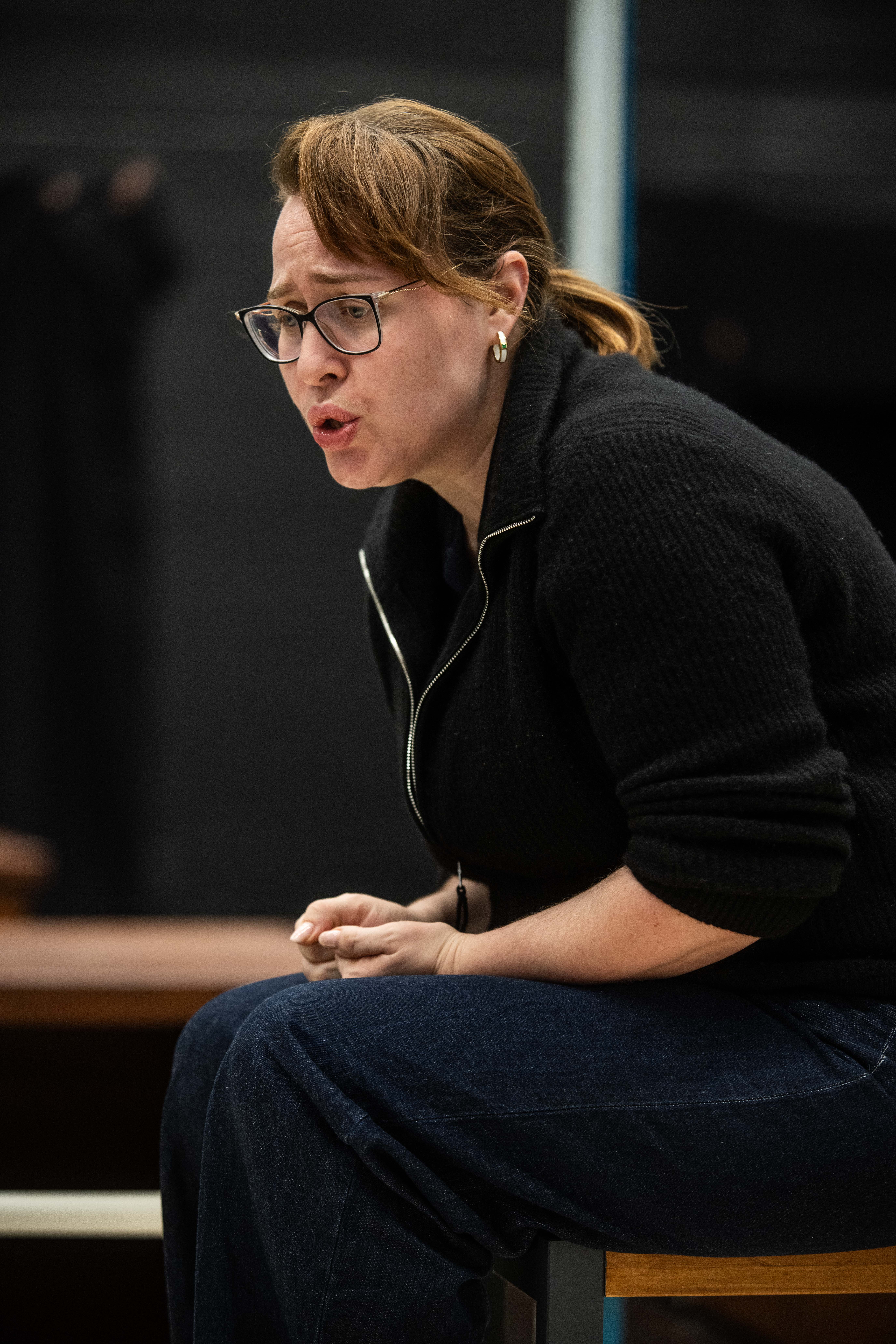
“Joan was a troublemaker, someone who didn’t fit in a neat compartment. I don’t want to use her as a symbol of some modern movement or ideology — she has been misused for that purpose too often in the past. Over the centuries, she has been portrayed as a saint, a charlatan, a patriotic icon or a revolutionary figurehead. What fascinated me was not so much the real, historical Joan as Tchaikovsky’s Joan — his own personal interpretation. My task was to listen to that Joan.”
Tchaikovsky started on this opera soon after Eugene Onegin, which marked his breakthrough as an opera composer. Your own production of Eugene Onegin was a key point in your career. Do you see a connection between the two operas?
“The most obvious connection is the period: they are separated only by a couple of years. But it is striking to see how the composer of the intimate, subtle Onegin then went on to create a colossal grand opéra spectacle with a chorus, battles, coronations and ballets — entirely in the French style. Even so, a clear recurring theme in all Tchaikovsky’s operas is his female lead roles. You have Tatyana in Onegin, Maria in Mazeppa, Natasha in The Oprichnik and Lisa in The Queen of Spades. Joan belongs in that list. They are all visionaries who cause trouble in the world around them, which is ultimately their downfall. Each of them breaks with their old life and what is considered ‘appropriate’ at a decisive moment. It is an act of courage, as well as one of self-destruction. Their rebellion is both magnificent and tragic, but the bravery they demonstrate remains breathtaking.”
Can you tell us something about your approach to the opera and why you think it will appeal to modern audiences?
“The key for me lies in rethinking the entire dramaturgy. That is because the libretto is problematic; Tchaikovsky wrote it himself, based on Schiller and other sources, and it is somewhat uneven. We have opted for a new structure that rejects a linear narrative in favour of a circular account, with Joan as the centre of gravity. At the heart of the production are her trial and conviction. We see her there alone, beset upon, already stigmatised. The scenes with other characters show them as witnesses, either in her favour or against her. The trial is constantly interrupted by flashbacks, memories, hallucinations and visions. What we see is her inner world — how someone can break, spiritually and emotionally, when under unbearable pressure.”
“It is clear from the start that Joan is different. She burns inside, as if she is possessed by an idea. She wants to set the universe alight, to melt a glacier. She is not a belligerent figure: she is fighting for redemption and an end to human suffering. But we see the people around her abandoning her to her fate, one after another. Those she helped turn against her; those she trusted betray her. In the end, nothing is left except the harsh conclusion that the world is fundamentally unjust and that everything — absolutely everything — seems pointless.”

“Straightforward, clear and colourful”
Conductor Valentin Uryupin, a specialist in both the well-known and lesser-known operas of Tchaikovsky, makes his debut with Dutch National Opera with this epic story of destiny, duty, and love.
An interview with conductor Valentin Uryupin
“Straightforward, clear and colourful”
Conductor Valentin Uryupin, a specialist in both the well-known and lesser-known operas of Tchaikovsky, makes his debut with Dutch National Opera with this epic story of destiny, duty, and love.
Text: Benjamin Rous
Valentin Uryupin’s repertoire encompasses all six operas that Tchaikovsky composed in his mature period. The production of The Maid of Orleans at Amsterdam will be the second time he has conducted this rarely performed work. “There are several obvious reasons why I end up conducting these operas. First, there are simply not many people in Western Europe who speak Russian and knowledge of the language is important for this repertoire — or indeed any opera. Someone needs to conduct these wonderful operas, including the less familiar works.”
While linguistic understanding may matter for this operatic repertoire, like all such works, there is also his personal interest in how Russian opera developed after Mikhail Glinka (1804-1857). Glinka is seen as the founding father of Russian classical music.
A personal credo
The Maid of Orleans occupies an interesting place in this development. It was the first opera Tchaikovsky wrote after his lyrical, intimate Eugene Onegin, the work that marked his breakthrough as a mature opera composer after various less successful attempts. “It never ceases to amaze me how Tchaikovsky was able to understand the atmosphere in Onegin so well and what the work requires. His opera is a real masterpiece. Onegin is one of the few operas where I don’t have to touch up or make changes to the orchestration as a conductor. It can be performed exactly as written.”
“The Maid of Orleans had the unenviable task of following this amazing achievement. It is interesting to see how Tchaikovsky apparently set himself some specific objectives in this new opera. Before Onegin, he didn’t really have a personal credo for opera composition. But in a letter to his devoted patron Nadezhda von Meck in 1879, he wrote that operas should be ‘straightforward, clear and colourful’. That might not be a maxim he invariably followed from then on, but we can see him trying to achieve it in this particular opera.”
Tchaikovsky’s least Russian opera
The Maid of Orleans tells the well-known story of Joan of Arc. Tchaikovsky based his version of this French historical subject mainly on the play by Friedrich Schiller, along with some other sources. This was a very different world to the Russian setting of Pushkin’s verse novel Eugene Onegin. “We never know exactly why composers chose particular subjects, what set off their imagination when reading something — what the catalyst was. My personal feeling with Tchaikovsky is that while he loved his country, his cultural tendencies extended far beyond Russia. He was a well-educated man who was thoroughly acquainted with European music. He idolised Mozart, for example. He travelled a great deal, especially to France, and he tried to catch all important new works of music or new operas. His worldview is more universal than that of some of his contemporaries, such as Mussorgsky and Borodin, members of the ‘Mighty Handful’.”

“The Maid of Orleans is without a doubt Tchaikovsky’s least Russian opera, perhaps along with his final opera Iolanta. It doesn’t contain any music based on Russian folk tunes. In this opera, he has clearly sought to emulate French grand opéra, which was already waning in popularity by then. That influence is evident in the spectacular crowd scenes, where he creates imposing theatre with the chorus. He also composed decorative ballet music, particularly for the second act. It was seen as an essential element of grand opéra, but we have to admit it isn’t his best music, so it has therefore often been left out of more recent productions. Dmitri Tcherniakov and I also decided to eliminate those ballet scenes, purely to focus the attention more on the stronger parts of the opera.”
Something new
The Maid of Orleans was well received in Russia and it was the first of Tchaikovsky’s operas to be performed abroad. But its initial success did not last. The opera soon disappeared from the repertoire in Russia and has only recently been regaining popularity. “The opera has many strong points. One of the highlights for me is the prayer in the first act, which has a real emotional impact. Some people call it the Russian ‘Va, pensiero’, which says something about the exceptional quality of the music. It is a part of the opera where I feel the composer has achieved something new for him. It has the intimacy of someone praying to heaven, which spreads to a crowd of people but without the music losing its power or becoming superficial. It is simple and pure but at the same time incredibly warm. Tchaikovsky occasionally lacks that warmth in his lesser moments, but when he is at his best he is unparalleled in his ability to combine this powerful intimacy with a lyrical simplicity. This number is followed by an absolute masterpiece, Joan’s aria in which she takes leave of the village where she grew up. It’s a shame these two numbers are at the start of the opera. The second half of the first act is one of the strongest parts of the whole opera. For me as a conductor, that is a reason to maintain the same intensity in the following sections.”
Strong female characters
Tchaikovsky identifies strongly with the lead female characters in all his operas. Joan of Arc is a character torn between her divine mission and the challenges of an Earthly life and of love. “The portrayal of Joan is really powerful throughout the opera. Ninety per cent of the opera is about her. Tchaikovsky was an outstanding composer of female roles. He was always able to find strong colours and exceptionally profound, moving music for them. But there’s something jarring about the love affair between Joan and Lionel, the enemy Burgundian knight. In Russian, we have this expression of something being sewn on with white thread, meaning it has been tacked on to something else when the two elements don’t really fit together that well. You can hear that, while Lionel’s music is well-written and effective, it is also rather unspecific. Of course, the imperial theatres had their own rules on what constituted a good opera, and even if those rules weren’t imposed upon him, Tchaikovsky would have known the audience had certain expectations. One of which was naturally to have a love story. This is perhaps one part of the opera that needs a bit of help from both the conductor and the director, as otherwise it doesn’t really work dramatically.”
“The same applies to a certain extent to the grand finale of the third act, in which Joan is denounced as a heretic. Contemporary sources on the original performances tell us this was also the least popular part with audiences at the time. Tchaikovsky blamed the poor staging, but I think we can conclude that his maxim of ‘straightforward, clear and colourful’ has worked least well here, with the music occasionally even becoming a little repetitive. So here too we have made various musical interventions, leaving enough material to explain what is happening in the story, but then we immediately move onto the parts with the heightened human conflict. I think we have a responsibility to make the opera sound as good, clear and balanced as possible so that we maximise the dramatic effect. I believe that Tchaikovsky — like many other Russian composers — was more interested in truth in his music rather than mere beauty. That is why we want to convey this truth effectively on the stage.”

The Maid of Orleans — a history of the interpretations
Even by the standards of an art form as cosmopolitan and time-transcending as opera, Tchaikovsky’s The Maid of Orleans is an exceptionally complex and multifaceted tapestry of cultures and eras.
The Maid of Orleans — a history of the interpretations
The feminine, the heroic and the divine
Even by the standards of an art form as cosmopolitan and time-transcending as opera, Tchaikovsky’s The Maid of Orleans is an exceptionally complex and multifaceted tapestry of cultures and eras. The martyr from medieval France who inspired the Russian composer became known throughout Europe thanks to a ‘Romantic tragedy’ in German, written by Friedrich Schiller around the turn of the nineteenth century, at a time when Napoleon was achieving overwhelming victories against the German states.
Text: Andrei Zorin, Professor of Russian at the University of Oxford
A Romantic heroine
Schiller had little affinity with the emerging ideology of German nationalism, as is clear from his choice of a subject from French history. Even so, the political and artistic movements of his day are reflected in his treatment of the material, as a professional historian who had carefully studied the available documents. “The historical aspect has been tackled,” he wrote to Goethe on the subject of his tragedy, “and used fully, insofar as I can judge.” The dramatist drew extensively from the historical sources to capture the spirit of the time and place, but the story is very much his own creation.
Female warriors are a recurring phenomenon in the mythologies of many peoples, but rarely do they occupy such a central position as in German mythology. Schiller, who was familiar for example with the Nibelungenlied (rediscovered in 1755), made his heroine more ‘Germanic’. Joan of Arc, the peasant girl who received divine instructions to exhort her country to resist the enemy, may have been a standard-bearer and source of inspiration for the royal army, but she never took up arms herself. Schiller, however, has her fighting and killing. What is more, he rejects the motif of her being burned at the stake, the fate of the historical Joan according to the known facts. In his tragedy, ‘Johanna’ is captured by the English but breaks loose from her chains and throws herself from a tower into the midst of battle, where she brings victory for France but is fatally wounded in the process.
In addition, Schiller added a love interest to drive the drama, in accordance with the conventions of Romantic theatre. Joan’s prophetic gifts and supernatural powers have been granted to her on condition that she makes a sacred vow of chastity and renounces Earthly love. But during the fighting, she suddenly falls in love with the English knight Lionel. She experiences these feelings as sinful, which is why she is unable to defend herself against the accusations and she ends up dead.
Two years after the premiere, Schiller wrote that his tragedy united “the feminine, the heroic and the divine”. In this trinity, he put the heroic in the foreground: Joan finds strength within herself to reject Lionel, fulfil her duty and save France. Destiny presents her with a fatal choice, but when the time comes, she has the strength to make that choice.
Translation into Russian
Schiller wrote his Maid of Orleans at the start of the Napoleonic Wars. The famous poet Vasily Zhukovsky worked on the Russian translation of the play during the time of the Holy Alliance, the coalition of rulers that the Russian tsar Alexander I saw as a template for a future fraternity of Christian nations and royal houses. Zhukovsky was one of the spiritual architects of this conservative, religious utopia.
Zhukovsky put a great deal of care and passion into his translation of Schiller, but he also shifted the emphasis from the ‘heroic’ to the ‘divine’. He redefined the genre of The Maid of Orleans, replacing the original subtitle ‘Romantic tragedy’ by ‘Dramatic poem’. He also deleted the most cynical and bitter passages spoken by Queen Isabella and used a more solemn and elevated tone for the speech. For example, he consistently translated Schiller’s ‘Herz’ (heart) as ‘soul’. In Johanna’s final words — “Brief is the suffering, eternal is the joy!” — he changed the physical suffering into spiritual anguish (‘grief’) and the ecstatic joy that Schiller (and later Beethoven) lauded into a calm, reconciliatory ‘blessedness’.
Tchaikovsky was interested not just in Joan of Arc but also in the German author Schiller and the Russian translator Zhukovsky. Notes on Joan of Arc and a French poem dedicated to her have been found in his juvenile notebooks. His first musical composition was the cantata An die Freude (on Schiller's poem of the same name) and his (partly lost) opera Undine was based on a German text by Friedrich de la Motte Fouqué in a translation by Zhukovsky. The composer may also have been driven in part by a competitive urge: he knew Verdi’s Giovanna d’Arco (1845), which he considered to be “exceptionally awful”.
After Eugene Onegin, an opera he felt to be too intimate and insufficiently theatrical, Tchaikovsky dreamt of composing a genuine grand opéra — one with historical costumes and sets, crowd scenes, passion and a compelling story. In late November 1878, while “leafing through Zhukovsky”, he decided he had found his subject. He began on the score two weeks later, writing to his brother Modest that he had experienced “an excessively strong wave of inspiration”. The wave continued unabated and he was able to sketch out the whole opera in less than two months.

Symbolic and political
Three-quarters of a century separated Tchaikovsky from when Schiller’s ‘Romantic tragedy’ was written and more than half a century from Zhukovsky’s translation. In that period, nationalism — suppressed by the Holy Alliance from 1810 to 1820 — had triumphed. The German Empire was proclaimed in 1871, and the Papal States was absorbed into a newly unified Italy in that same year. France’s defeat in the Franco-Prussian War led to an upsurge in French national consciousness — the mirror image of what had happened in Germany half a century earlier.
Joan of Arc became one of the symbols of French nationalism. In 1874, a statue of the heroine was erected in Place des Pyramides in Paris. It was also around that time that the process of canonisation started (which would be completed in 1920). Music theatre was part of that trend. Charles Gounod composed music for a play by Jules Barbier about Joan of Arc, and the Opéra Garnier reopened in 1876 after a fire with an opera on her by Auguste Mermet. In keeping with the spirit of the age, greater factual accuracy was expected from artists who tackled historical subjects than in the past. French authors may still have copied some of Schiller’s anachronisms but they now rejected the storyline elements he had invented — Joan’s forbidden love for an English knight and her death in battle. Barbier ended his play with Joan, as a righteous woman, burned at the stake and ascending to heaven, while Mermet concluded his opera with the coronation of Charles VII in Reims — the high point of Joan’s fame and triumph. During that ceremony, she has a vision of her future death as a martyr, but she decides to continue the fight for France despite that fate.
Patriotism
Russia too experienced a surge of patriotism at that time. During the Russo-Turkish War of 1877–78, a clear ideal emerged of female heroism with the veneration of the Sisters of Mercy, who were officially permitted for the first time to tend the wounded soldiers on the frontline. Of course, such feminine self-sacrifice was very different to the image of the military Maid of Orleans. Only later would true ‘Russian Joans’ appear — in the underground revolutionary movement of the same decade.
In 1878, when Tchaikovsky decided on his subject, Russia was captivated by the trial of Vera Zasulich, a woman who had attacked and seriously injured the governor of Saint Petersburg after he had ordered a political prisoner to be flogged for failing to remove his cap. Zasulich was acquitted by the jury on 31 March, in contravention of the applicable laws. The acquittal was greeted by loud cheers from the spectators in the courtroom and hailed by liberals generally, who admired her as a heroine fighting despotism.
Tchaikovsky was a conservative monarchist who felt no affinity with this stance. He often referred to the trial of Zasulich in his letters and he condemned both her acquittal — as a grave violation of the rule of law — and the public celebration of the outcome, which he saw as a sign of future rebellion. Even so, he wrote to his confidante Nadezhda Filaretovna von Meck of his “sympathy for Zasulich as a person, who is undoubtedly exceptional and instinctively invokes admiration.” Although there was not a trace of revolutionary spirit in Tchaikovsky, he saw the young terrorist as a victim of “random violence” on the one hand and “misguided ideas” on the other. That ambivalent attitude is seen too in the opera on which he started work a few months later.

A cry of sympathy
Tchaikovsky agreed with his French predecessors that Schiller’s tragedy was not historically accurate but felt that it “outshone all other artistic representations of Joan in its psychological depth”. He decided on a compromise. On the one hand, he did not keep the image of Joan as a warrior. His Joan dies not on the battlefield but at the stake — like the real Joan. On the other hand, he kept and even enhanced the love story.
In terms of Schiller’s formula of “the feminine, the heroic and the divine”, the feminine became the most important element for Tchaikovsky. The play had to be cut severely for his musical adaptation: Tchaikovsky retained only a third of the characters and fewer than a third of the scenes, concentrating on the action. At the same time, he put greater emphasis on the relationship between Joan and Lionel, for example adding a love duet just before the scene in which Joan is burned at the stake — which turned it into a lament for a lost love rather than her apotheosis in martyrdom.
While in the early stages of his work on the opera, Tchaikovsky wrote to his brother:
“I was reading yesterday about Joan of Arc [...] and when I got to her trial and renunciation and her execution (she screamed horribly when she was led away and begged them to cut off her head instead of burning her), I burst into tears. I suddenly felt such pity, such pain for all of humanity, and I was overwhelmed by a sense of unimaginable melancholy!”
That feeling of pity is expressed in the opera too: when Joan is led to the stake, the chorus of bystanders sing “Poor child!” Tchaikovsky based his final scene largely on Barbier, but while the French author had invisible angels singing “Go, daughter of God, go!”, Tchaikovsky’s version ends with the crowd surrounding the stake and calling out “Unhappy one! The Lord will forgive you!” The opera therefore ends not in a combination of ecstasy and religious awe but in a shriek of pain and pity.
When he completed the opera, Tchaikovsky wrote to Von Meck:
“I don’t think ‘The Maid’ is my best and most deeply felt work — but it seems to me to be precisely the work that could bring me popularity.‘Onegin’ and some of my instrumental works are closer to my inner self; I wrote ‘The Maid’ not so much in an unselfconscious flow, [...] but with more calculated attention to the theatrical and sound effects — which happens to be the most important thing for an opera.”
His prediction did not come true. Eugene Onegin is still one of the standards of the global operatic repertoire whereas The Maid of Orleans is rarely performed and enjoys little popularity. But perhaps we should also cautiously cast doubt on the other part of Tchaikovsky’s assessment. It is precisely in this opera that we hear his “moral individuality” — as he called it himself — reflected in the music, feeling pity and pain for “all of humanity”.

“Am I culpable because I am human?”
“The protocol is theirs; the stake she was burned at is mine.” These were the painful words the Russian poet Marina Tsvetaeva used to describe her connection with Joan of Arc. Such deep identification with someone else — whole-heartedly embracing their fate — can seem astonishing.
Background: The soul of Joan of Arc
“Am I culpable because I am human?”
“Joan belongs neither to the Church nor the State: the State (Charles VII, her ‘gentle dauphin’) abandoned her to her fate and the Church burned her to death. Joan does not belong to the Church and neither does she belong to the fatherland (society), and not even to Christianity — not to the Universe, either. Joan belongs to the voices (which belong to God). No one has the copyright to Joan; she is nobody’s property. A miracle must become manifest to be a miracle. You become confident in yourself if you find something inside you that is bigger than you.”
– Marina Tsvetajeva
Text: Analena Weres
“The protocol is theirs; the stake she was burned at is mine.” These were the painful words the Russian poet Marina Tsvetaeva used to describe her connection with Joan of Arc. Such deep identification with someone else — whole-heartedly embracing their fate — can seem astonishing. What could a twentieth-century Russian poet – an emancipated married woman and mother of two children – have in common with a fifteenth-century peasant girl from the French countryside, a virgin who was burned at the stake because of her mystical visions?
Trial and execution
Tsvetaeva gives the answer in characteristically trenchant language: it has nothing to do with courage in battle, political triumph or national heroism. ‘Protocol’ and ‘stake’ refer respectively to the trial and the execution. These words from different spheres clash in this sober, brutal antithesis. ‘Protocol’ evokes bureaucratic procedures, rigid customs, the cultural codes of an era — the domain of the historian. The ‘stake’ conjures up Biblical images of the burning bush, the scorching truth of human suffering — the domain of the poet. In confronting the everyday world with the supernatural, Tsvetaeva identifies as a poet with her heroine’s existential experience.
The word ‘protocol’ has a very specific meaning in the case of Joan of Arc: it refers to the official records of her two trials — the one condemning her in 1431 and her rehabilitation in 1456 — which, exceptionally, have survived in full. Joan of Arc’s life is the best documented of all the women of her time. However, our knowledge of her is obtained through a highly specific and distorted medium: that of the law courts, from the charges to the final acquittal. We have witness statements, accusations and interrogation reports, which preserve Joan’s voice in her answers. They are followed by the sentences passed in the two trials, a quarter of a century apart, with diametrically opposed conclusions
The stake precedes the protocol in the story of Joan of Arc. The horrific fate of being burned at the stake was already part of the rhetoric of her enemies long before her trial, and even before her first victory at Orleans. In answer to a letter she wrote to the English commander Talbot, he wrote she would be advised to return to her cows as otherwise she would be burned as a witch. This menacing refrain was picked up by the English regent in France, Bedford, and by Warwick, the commander of Rouen. Warwick even made sure she was given the best medical attention to prevent her from dying of some disease and thereby escaping the flames.
Despite the fact that the outcome seemed predetermined, adherence to legal forms was regarded as being of the utmost importance. Respected French institutions such as the University of Paris provided experts for the trial and advised on the articles of the accusation. The trial was presented as flawless from the start.
The legal protocol has had such a far-reaching impact on the story that even artistic works that do not include the trial directly — such as Schiller’s tragedy or Tchaikovsky’s opera — are still indirectly shaped by it. Schiller may be known for his endeavour to go beyond the historical facts (what Tsvetaeva called the ‘protocol’) in order to portray human truth, but he still drew on sources that came from the trial records.
The inner court
In Schiller’s tragedy, the court of law is internalised, embedded within his heroine’s consciousness in accordance with the Kantian model of the conscience as inner self-judgment. Joan’s psyche splits into subject and object in her monologues, into a personal and subjective ‘I’ (who has doubts and defends herself) and a higher ‘I’ (who gives orders, makes accusations and judges). In this inner process, the category of ‘sin’ is replaced by the concept of ‘crime’ with its legal overtones. Joan sees herself as ‘innocently guilty’ — she shoulders an existential guilt for a crime that she did not actually commit. Her guilt in her eyes is that of her own human nature: “Am I culpable because I am human?”
Schiller adds a further layer of complexity when he shows how guilt is intertwined with an all-encompassing shame when her father censures her in front of the entire community. Her father subjects her to public humiliation, throws accusations at her and demands an answer in the name of the Holy Trinity. Joan’s silence, paralysed with all eyes upon her, is interpreted by the crowd as proof of her guilt. But her behaviour, seen in psychological terms, is a response not to the false accusations (of witchcraft and sinful pride) but to the unbearable shame. She accepts a false appearance of guilt so as to ward off the emotional crisis of this public humiliation. Her banishment (in Schiller’s version) becomes the fulfilment of her deep-seated wish to “hide in the depths of the Earth”, away from people’s accusatory gaze.
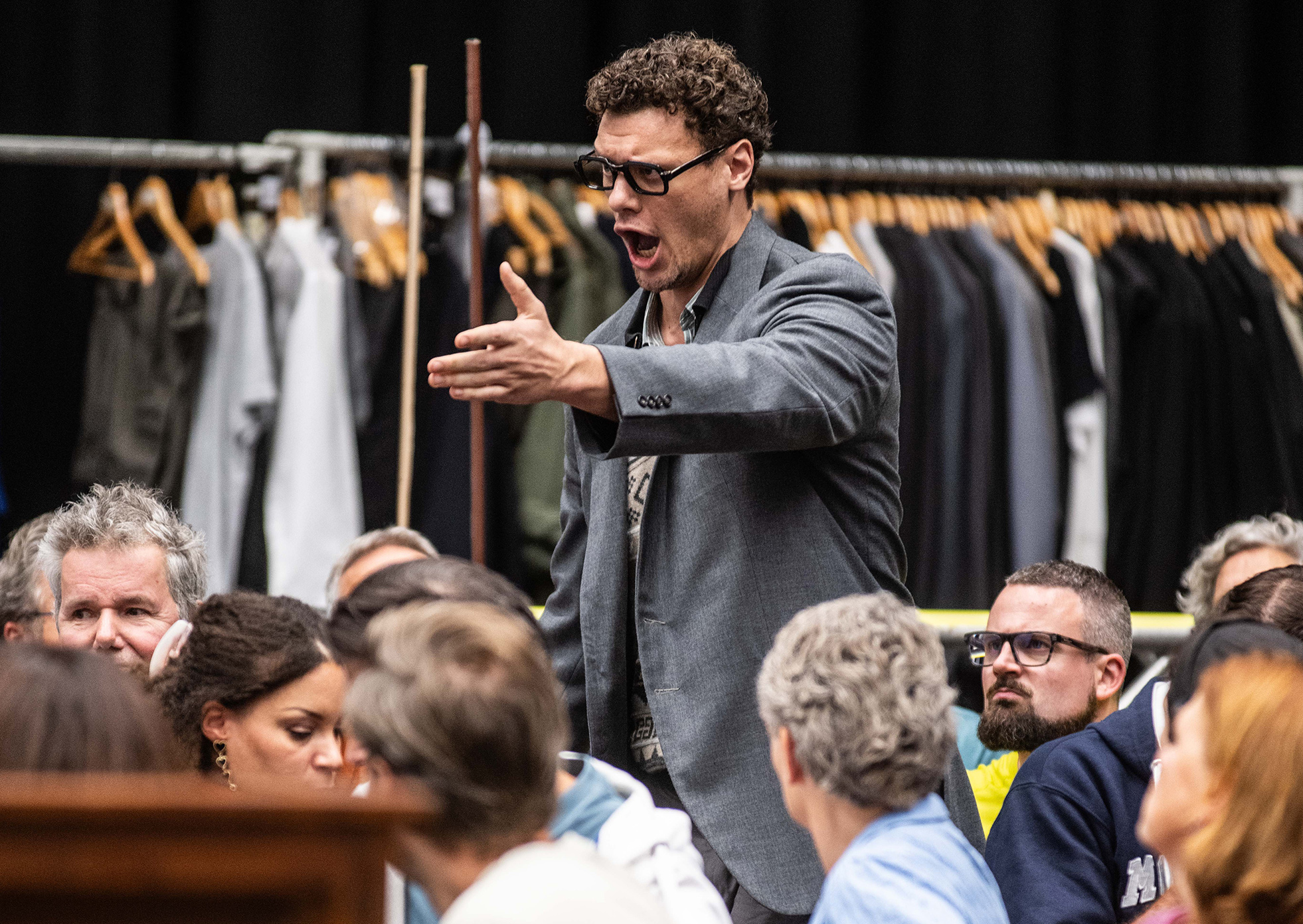
The trial as an opera
The contrast between the public tribunal and the inner process of judgment takes on an even sharper form in Tchaikovsky’s opera because of the conventions of operatic drama. Tchaikovsky wrote the libretto himself, cutting and pasting scenes from Schiller’s tragedy like a film editor. By keeping the number of characters, subplots and texts to a minimum, he gives more weight to the scenes in which Joan stands opposite a tight-knit community — being interrogated, accused and condemned.
In the first act, she is forced to defend herself in front of the villagers in the face of her father’s attempts to marry her off. In the second act in Chinon, she similarly has to answer the questions — sympathetic this time — from the archbishop of Reims in front of the whole court. Her fate turns in the third act, during the coronation — an event that should have marked her triumph. Her father’s accusations, supported by the entire community, the king and even Heaven (with a thunderclap) lead to her ignominious banishment.
Each one of those scenes repeats the structure of a courtroom trial. Joan stands alone, without the support of a lawyer or counsellor, the accused opposite a united collective power. In the opera, this is emphasised through the use of the chorus — at times forceful and in unison, symbolising the collective entity, and at times turbulent and divided.
The French heroine
When Tchaikovsky began work on his opera The Maid of Orleans (1878-79), the idyllic little village of Domrémy — where Joan was born and where the story starts — was no longer the scene of battle that it had been during the Franco-Prussian War in 1870. Yet the region was still imbued with the nationalist spirit engendered by that conflict. Tchaikovsky regularly visited France and he saw this patriotic upsurge from close by. Joan of Arc was embraced as a national symbol everywhere. In 1871 alone, more than seventy-five statues of her were installed in churches in Normandy. Her name became a sign of resistance in the areas occupied by the Germans. The bishop of Orleans, Félix Dupanloup, seized the occasion to lobby for her to be made a saint; this resulted decades later in her beatification (1909) and ultimately canonisation (1920). Joan of Arc thus became the French national patron, symbol of the Third Republic.
Joan’s story also had personal significance for Tchaikovsky. He had first learned about it as an eight-year-old boy, when he read the children’s book Les enfants célèbres by Michel Masson with his French governess. The story made a deep impression on him, so deep that he devoted his very first poem to Joan, starting:
“On t’aime, on ne t’oublie pas, Héroïne si belle!”
(We love you, we don’t forget you, Beautiful heroine!)
The emotion Tchaikovsky had felt as a boy stayed with him. He felt the same sympathy for another child in Masson’s book, the young “prisoner of the Temple”, Marie-Antoinette’s son, who died in prison. There were only two portraits in Tchaikovsky’s study in his house in Klin: one of his teacher Anton Rubinstein and one of the unfortunate little prince, Louis-Charles.
Masson’s tale of that child starts with a sentence that perfectly encapsulates Tchaikovsky’s lifelong attitude to injustice: “Whichever side a crime comes from, whether it is in the name of the throne or the state, it is equally appalling, godless and monstrous. History can never acquit the perpetrators; whatever lofty euphemisms a crime is given, whether it is called ‘the king’s will’ or ‘the sovereignty of the people’, a crime remains a crime. A people has no greater right to revenge than an individual, and a crime committed by the many is no less awful than a crime committed by one person.”
Joan and the world
When Tchaikovsky started on his libretto, he did not just look at Schiller’s tragedy, which he felt did not stick closely enough to the historical facts. He also turned to the historians of his day, such as Jules Michelet and Henri Wallon, for a more authentic account of Joan of Arc. He did not want his Joan to escape her fate at the stake — that inevitable end that Schiller had avoided by letting her die heroically on the battlefield, submerged under the banners of her victory. For Tchaikovsky, as for Tsvetaeva, that moment of martyrdom was precisely the point at which he felt the strongest identification with his heroine. He never shows her triumphant, at the head of her army. In his opera, Joan is always facing the world alone.
The opera does not feature a foreign enemy, in contrast to many Russian operas where a threatening ‘other’ nation plays a key role; take the ‘Polish acts’ in Glinka’s A Life for the Tsar or in Mussorgsky’s Boris Godunov, or the ‘Polovtsian act’ in Borodins Prins Igor. The enemy ‘other’ becomes almost tangible in the very music. That is not Tchaikovsky’s subject. He is interested in an internal conflict. It plays out within a single community — people who speak the same language, share the same religion and culture. There are no English characters at all in the opera. Even Lionel, who is an English knight in Schiller’s version, is a Burgundian in Tchaikovsky’s opera. There is nothing to hide behind: the accusation made against Joan comes from the person closest to her, namely her own father.
Saintly and human
In his version, Tchaikovsky deliberately removed everything that could suggest a patriotic liberation drama, aspects that were still present in Vasily Zhukovsky’s translation of Schiller’s play. For the drama, he followed Michelet, who called a crucial chapter in his Histoire de France simply ‘Joan and the king’. That gave Tchaikovsky the structure for his opera. In the first act, he introduces the heroine, in the second, the king, and in the final two acts their respective narratives are taken to their culmination: the coronation of Charles and execution of Joan.
However, Tchaikovsky is most interested in the interior world of his heroine — her doubts, fears, loneliness, tenderness and despair. She is both saintly and human, above all in her vulnerability. Ultimately, the words Tsvetaeva once used to describe herself could equally apply to Tchaikovsky:
“What have I known since my birth?
The souls of my heroes.”
Artistic team
Singers
Always know what’s on
Be the first to be informed about our productions and receive exclusive content in your inbox.
Success!
From now on you will receive our performance updates.
Something went wrong
Something went wrong, please try again later. Apologies for the inconvenience.





